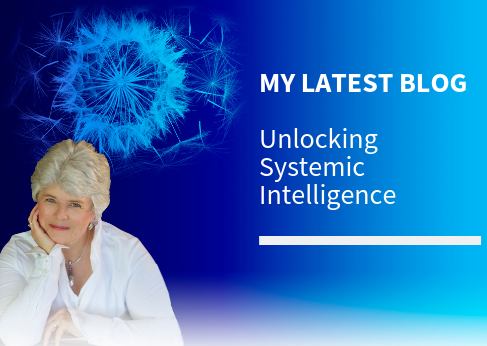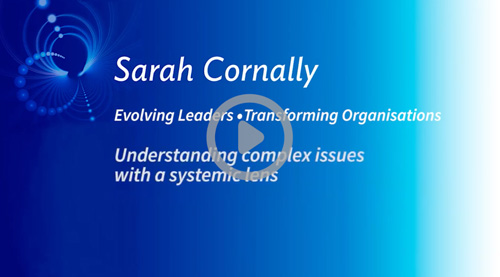
Understanding complex issues with a systemic lens
Complex issues are characterised by non-linear dynamic relationships. It’s typically not possible to predict cause and effect, because the movement of one aspect influences multiple other aspects simultaneously and has an organic effect, like a living system. On the other hand, a complicated issue is typically characterised by several possibilities in terms of cause and effect. It requires someone with specialised expertise to be able to understand and diagnose the cause and effect relationships and advise about how to influence the issue. It is somewhat predictable with specialised knowledge. Working with complex issues requires a more experimental adaptive approach; being able to observe the system, the dynamics effects and learn and adapt as it evolves.

It’s common for people to try to solve complex issues as if they were complicated problems in a rational logical linear way. It’s not a good match for a situation that is non-linear, emergent and evolving. Such an approach inevitably misses the mark, and ultimately, we see the problem has not been solved. A common example is when organisations keep repeating the same pattern, such as when the same issue keeps resurfacing, even over a 10 or 15 year cycle. This indicates there’s something systemically that is not being seen and understood.
To examine a complex issue requires determining where in the system you need to focus on most. Is it from the biggest possible perspective: seeing it is part of how everything works together in multidimensional relationships? Or from the most personalised perspective: what is going on in your personal system and how much of an impact is that having on the larger system?
In systemic terms, it’s like playing with the lens in a camera. Depending on how far you zoom in or out, you can get quite a different picture. With complex issues, do we go down to the personal level, or up to the collective level? Do we go out to the universal level? If you start examining an issue with a systemic lens, the process itself will reveal what’s going on at the personal and collective levels, and potentially, depending on how you frame the questions and the work, what’s going on at the universal.
By looking at an issue through the systemic perspective, you reveal dynamics that are otherwise hidden. It’s as if there are invisible threads between everything. Until you shine a light on those invisible threads to illuminate them, you’ll miss the connections and make assumptions that are potentially flawed. When you look at these different levels you can discover those invisible threads. They change the perspective in a very substantial way.
The end result is you come up with solutions that are resonant with a healthy system. More elegant, sophisticated approaches present themselves, that actually look at the interrelationships and the dynamics between each of the elements of the issue. Importantly, it’s not “I” or even “you” who come up with the better solutions, but the person whose issue it is sees the issue fundamentally differently.
With that new perspective, there’s an expansion in the possibilities, and with that expansion comes a freedom, and a liberation. Those are the things we’re pursuing when we examine complex issues with a systemic lens.

Written by Sarah Cornally
Strategic Leadership Advisor
Cornally Enterprises Pty Ltd
PO Box 4413, Castlecrag NSW 2068 Australia
Fax +61 2 9475 0254








